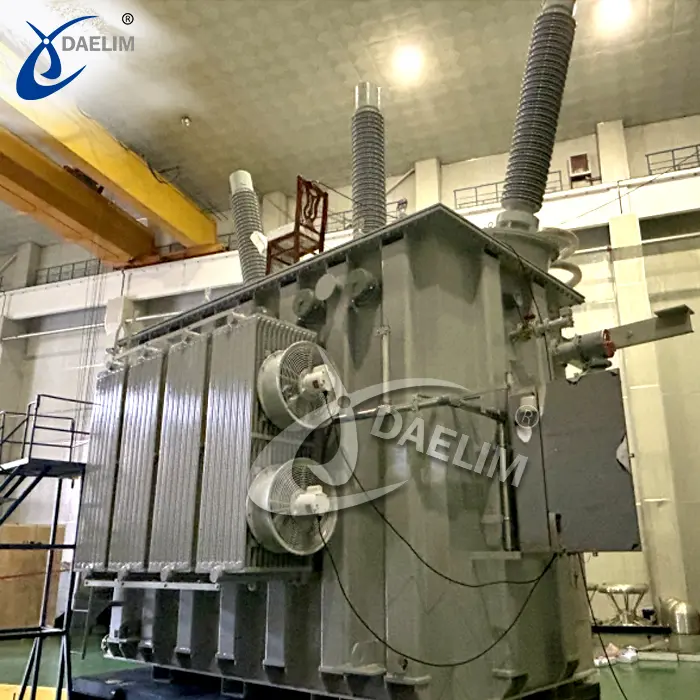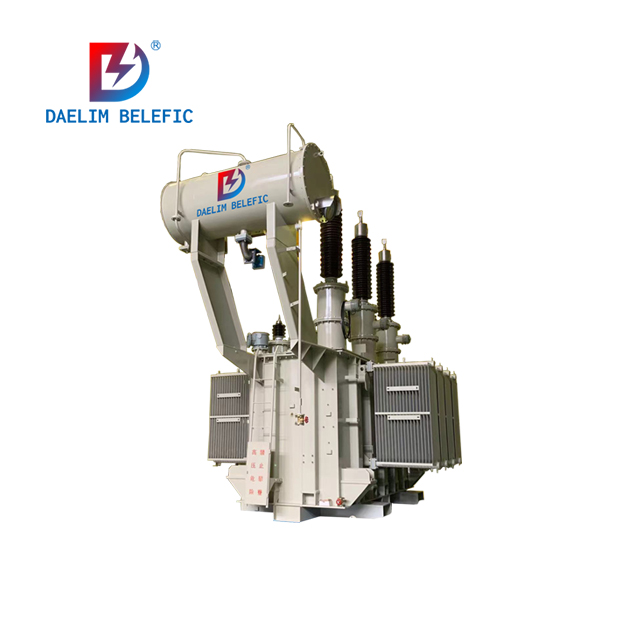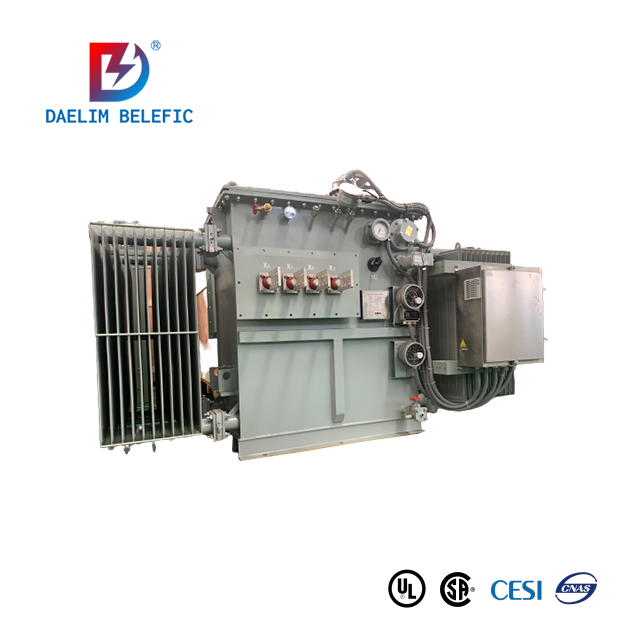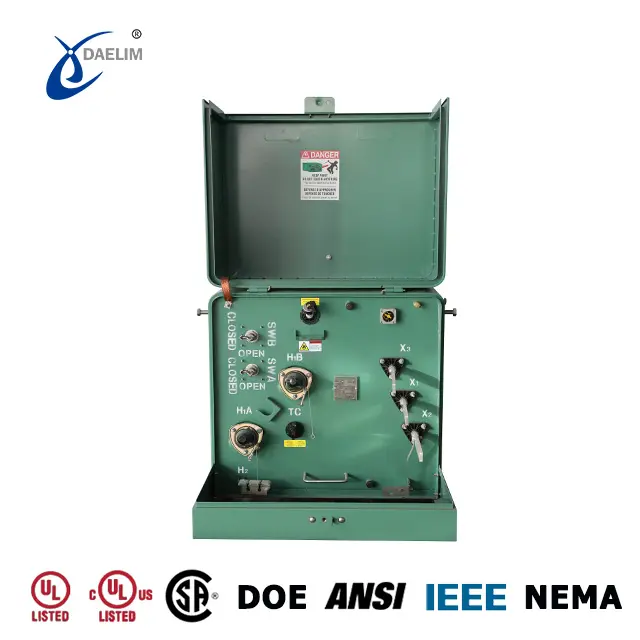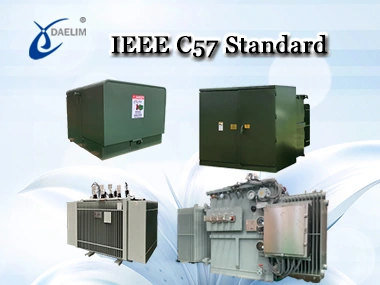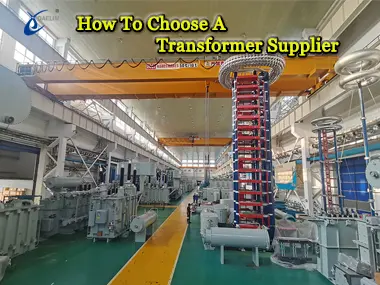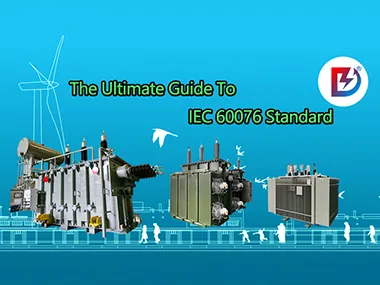CSA C88 Standard For Power Transformers
CSA C88 is a comprehensive standard for power transformer and reactor bushings in Canada and across the globe.
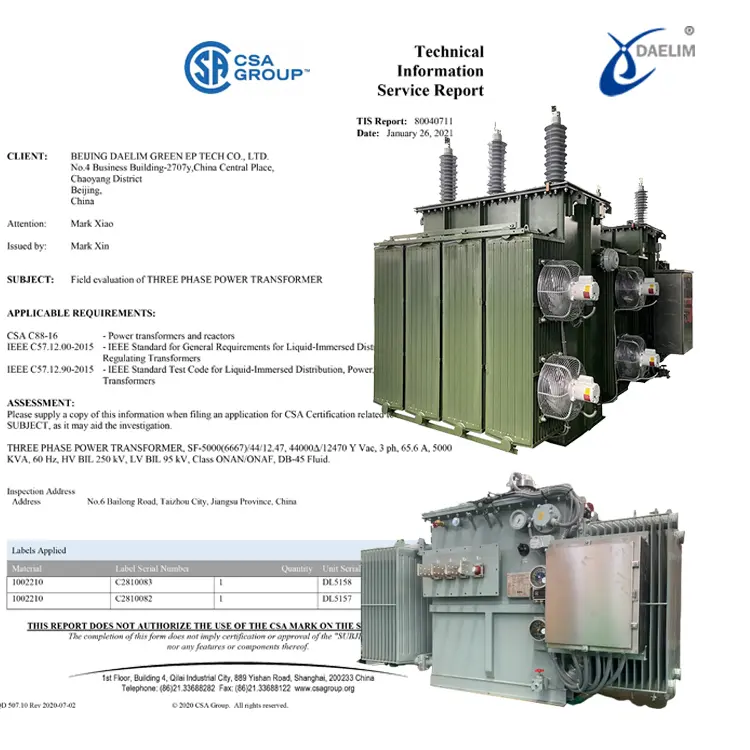
Daelim is a professional supplier of CSA standard transformers. Not only has CSA product certification but also cUL listed. It can provide CSA and cUL labeling services for your transformer.
This standard is suitable for lightning impulse insulation rates of 110 kV to 1950 kV, which are often found in outdoor bushings. The transformers and reactors are specifically designed for this kind of equipment.
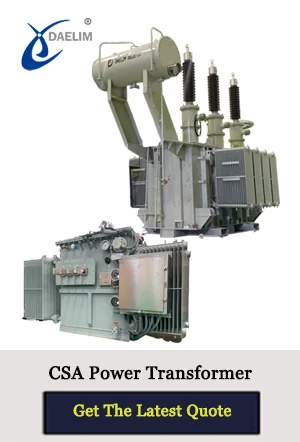
It provides specifications for:
- liquid-filled transformers
- autotransformers
- booster transformers
- load-tap-changing transformers
Learn more about the CSA's C88 specifications and procedures. This standard will specifically discuss power transformers and reactors.
We'll get an inside look at how these rules were meticulously developed by the Canadian Standards Association. We will also talk about the common practice of using transformers and reactors.
With the help of this guide, we will have a better understanding of the Canadian electrical system.
What is CSA C88 Standard?
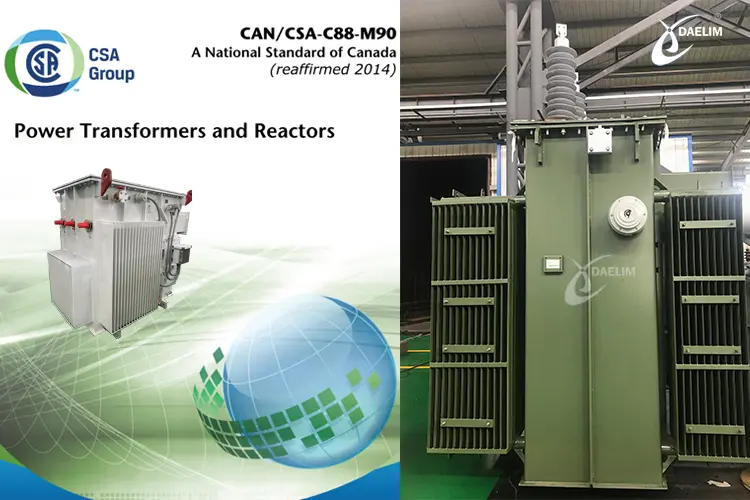
The CSA C88 standards are a set of rules for checking and testing bushings in power transformers and reactors in Canada and all around the world.
It was historically made available to the public in 2016 by CSA.
CSA's C88 Technical Standards include the following areas:
- oil-filled transformers
- grounded transformers
- load changing transformers
- phaseshift transformers
- autotransformers
- booster transformers
- series-voltage regulators
- shunt reactors
The Technical Committee on Power Transformers is responsible for this Standard. Thus, it has been widely approved by the Strategic Steering Committee on Power Engineering and EMC.
According to the CSA Policy guiding standardization — Code of good practice for standardization, "substantial agreement" is the definition of consensus used in the development of the C88 policy guide.
Learn More About CSA Standards.
Who is CAN/CSA?
The Canadian Standards Association (CSA) managed the establishment of this National Standard.
CSA was traditionally established in 1919. Consequently, in 1973, the Standards Council of Canada accepted the CSA as a member of the National Standards system.
Since its members are all unpaid volunteers, it doesn't charge the industry it regulates a dime for the privilege of creating and certifying standards.
The Association offers certification and testing in addition to its standard-setting activities. CSA Mark-awarded products are thoroughly audited and inspected regularly to ensure that the certification is still valid.
The Standards Council of Canada (SCC) is the apex authority in charge of Canada's National Standards system, a loose alliance of autonomous groups working toward the improvement of Canada's system of voluntary standardization.
National Standards of Canada should first review a document before being accepted and widely acknowledged by the Standards Council of Canada (SCC).
Approval of a standard does not alter the standard's technical content, which remains the jurisdiction of the accredited standards body.
Overall, CSA has extensive knowledge in conducting tests in accordance with vital industry standards like C88 for power transformers and reactors.
Read More: How To Purchase 3000kVA Transformer In USA & Canada?
What is CSA's C88-M90 Standard Version?
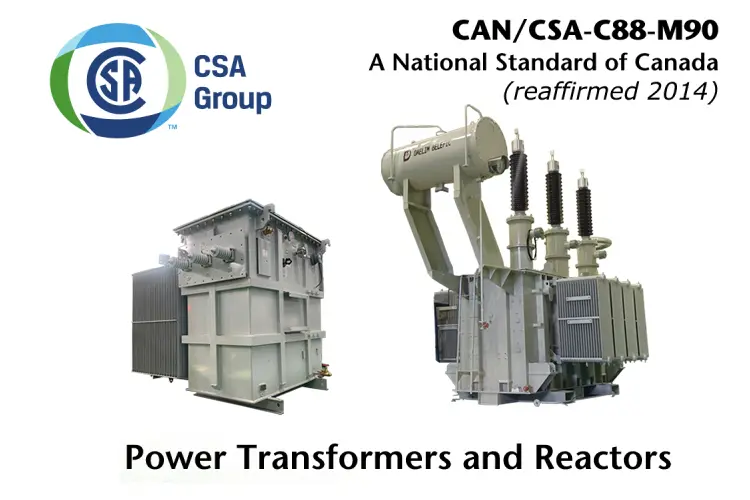
CSA Standard C88-M90, Power Transformers, and Reactors spans 91 pages and was finally released in August 1990.
This is the latest version of Power Transformers and Reactors from the Canadian Standards Association.
It has been the fourth edition (CSA Standard C88). This updated version replaces the older 1947, 1968, and 1979 models.
You may enjoy: Pad Mounted Transformer
What are the Major changes and revisions for this type of Standard?
a) Chopped wave tests have been now eliminated and external air clearances have been also introduced to induced, applied, and impulse testing.
b) Measurements of RIV and apparent charge are now required for transformers with ratings above 245 kilovolts. When using a forced directed oil flow, this Standard permits a 70°C increase in winding temperature on average.
c) This Standard was first developed with two-winding transformers, however, it can be generally used with other transformer configurations.
These include:
- autotransformers
- load-tap-changing transformers
- shunt reactors
- series-voltage regulators
What is CSA's C88-16 Standard Version?
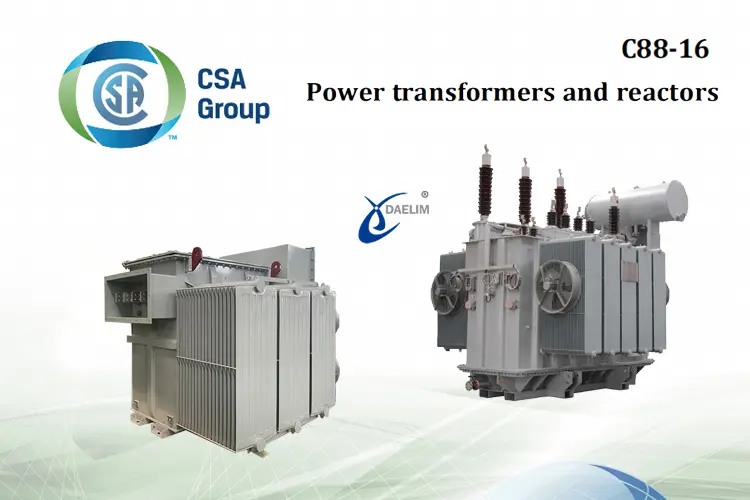
The C88-16 version is the fifth version of the CSA standard for power transformers and reactors released in 2016.
This edition replaces the 1990 version, as well as the 1979, 1968, and 1947 versions before it.
While this Standard was specifically written with two-winding transformers in mind, many of its requirements apply to other transformer types such as autotransformers, load-tap-changing transformers, shunt reactors, and series-voltage regulators.
Learn More About CSA Std
What are the Major changes and revisions for this type of Standard?
Major changes from previous editions have been now incorporated into this updated version of the Standard, including the following:
a) Reference books and definitions are freshly updated frequently to include new data and new or amended definitions
b) cold-start procedure and background material are now included
c) an insulating liquid with a melting point exceeding 300 degrees Celsius has been also introduced
d) it adjusted the maximum allowable temperatures because of a hot regions
e) new standards for stabilizing windings have been thoroughly implemented
f) added provision for gasket supplies
g) as a result of rising demand, new specifications for control cabinets have been also established.
h) updates have been widely made to the following tests:
- induced potential
- lightning impulse
- switching impulse
- loss, and impedance
- tank pressure
- gas accumulation
i) there is now a new provision regarding HVDC converter transformers
j) addition of a new provision addressing high-temperature-insulated transformers
k) provision for tolerance for load losses.
l) a summary table of tests included
Try For Free: 3 Phase Pad Mounted Transformer
What Are The Preparation Of Specifications For Single-Phase Transformers And 3-Phase Transformers?
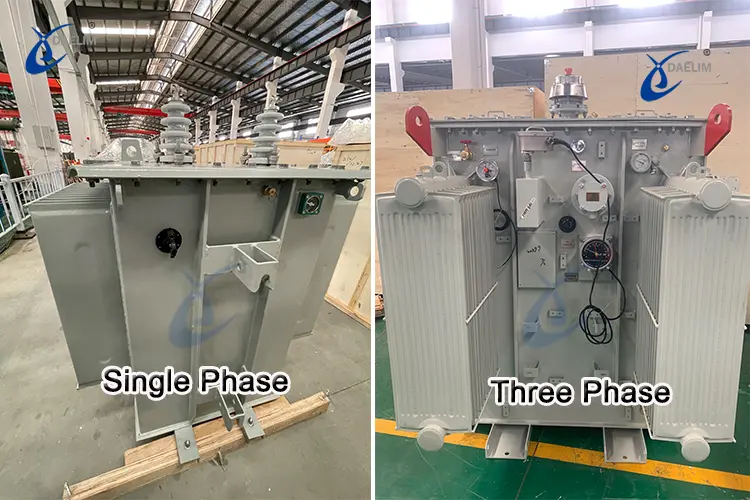
One of the first steps in ensuring the long-term dependability of single-phase transformers and 3-phase transformer is to create detailed specifications.
As long as they are correctly used according to the manual and kept in good condition to prevent the insulation from aging too quickly, transformers are dependable and provide trouble-free service.
These are the criteria by which the rating is greatly determined, according to CSA-C88-M90. It is equivalent to the MV-rated load together with the manufacturer's voltage, current, and frequency.
In the context of this standard, it is therefore understood as a rating for testing purposes, defining the maximum output that can be always extracted from the equipment under the specified test conditions.
STANDARDS
It's important to note that standards like CSA-C88-M90 have slightly different definitions and requirements.
- standard operating procedures
- rated output
- condition of excessive voltage
- high carrying capacity at freezing temperatures
- suggestions for impedances
- the evaluation process and scales
- bushing dimensions and insulation
- increase in oil temperature.
- tap range
- magnitude of the magnetization current, losses, and impedance
As mentioned earlier, the 1990 publishing of CSA C88-M90 was again reaffirmed in 2009 but did not set any standards.
In most cases, IEEE and IEC standards undergo a major revision or upgrade every decade. Users should modify their unit's specifications for the transformers to reflect CSA-C88-M90 requirements.
Learn More About IEEE Standard
What are the System Requirements for Single-Phase and Three-Phase Transformers?
Whether a single- or three-phase transformer is necessary depends largely on factors such as the site's size and weight constraints, the cost and availability of replacement parts, and the need for dependable operation.
Transportation
It's possible that hydraulic stations can only use single-phase transformers due to logistics and setup issues. Most sub-stations use three-phase transformers since they are the most cost-effective up to 500kV.
Winding Connections
The windings inside a three-phase transformer can be generally connected in a wye, delta, or zigzag pattern. Transformers that operate on a single phase have their connections built outside the storage tanks.
Vector Group
Vector Group's CSA-C88-M90 standard defines angular displacement as the time delay between the line-to-neutral voltage at the high-voltage terminal (H1) and that at the low-voltage terminal.
The angular displacements of most commercially available three-phase transformers are either 0 (Clock system) or 30 (degrees) (of phase displacement).
Levels Of Insulation
According to CSA-C88-M90, the greatest voltage spike that is acceptable is the Lightning Impulse Level.
System-wide insulation coordination is crucial for optimal insulation performance. Standards focus considerable emphasis on the presence of varied insulation levels while maintaining the system voltage (BILs).
Terminals
A Terminal, as specified by CSA-C88-M90, is a device used to join an internal winding to an exterior conductor.
The terminal's electrical qualities and physical characteristics should always be detailed in the specifications provided by the user.
- Bushing material
- Level of line and neutral bushing insulation.
- Excessive voltage
- Excessive loads
- Terminal Type
- Oil-maintenance mechanism
- CTs and their features that can calculate the ground shield length of the bushings
- A cover placed or horizontally placed
- Locations
- Terminal layout and identification
- 10Requirements for compliance with CSA/EEMAC
Learn More: Single Phase Pad Mounted Transformer
What Are The Special Requirements For Power Transformers and Reactors Of CSA C88?
The specifications should include information on various non-standard needs in addition to the typical transformer guidelines.
Some of which are MV.A, volts, insulation levels, resistance, loss evaluation values, and tapping information.
Here are some of the special requirements for power transformers and reactors:
- Specifying a rise in MV in a way that complies with IEEE standards from the south of the United States will help you get the most cost-effective transformers.
- There is no need for a rating in sub-freezing conditions.
- According to CSA and IEEE regulations, an over-voltage of 110% at no-load and 105% under load is unacceptable.
- The recommended pre-fault voltage per CSA-C88-M90 is 1.1 p.u. Users should not provide more information about this condition than is necessary by the software.
- On-load tap-changers typically employ high-viscosity lubricants like Voltesso 35, which allow the devices to function in temperatures as low as -25 °C.
- Provide an altitude above sea level if the transformers will be generally used at an elevation of more than 1,000 meters.
- If the transformers will be usually used in dirty settings, the creepage lengths of the bushings must be also determined.
- When a direct-replacement transformer is necessary, the volume of the spill must be minimal.
- The requirements could call for a particular oil preservation system, like a free-breathing conservator, an airbag conservator, or a nitrogen-pressurized system.
- The use of FR3 oil should be specified in the technical requirements for tap changers, bushings, and other components of transformers.
- A variable flux tap autotransformer has tertiary voltage output that changes between taps.
Keep Reading: Basic Guide To High Voltage Power Transformers
What Are The Rating Plate For Power Transformers and Reactors?
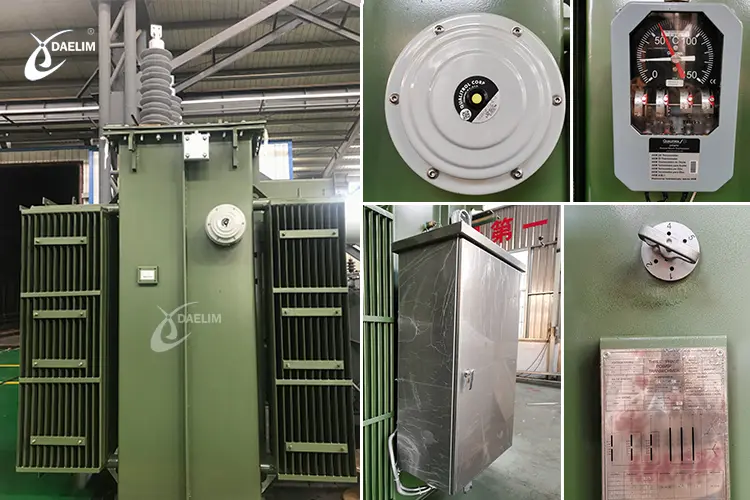
As the user, you should consider the rating plate the transformer's most essential and easily available record.
This term is often referred to as the Nameplate in C57.12.10-2010.
The rating plate's legibility typically declines after a few years of use. Engraving and stamping, or another durable technique of inscribing data tags are necessary under CSA-C88-M90.
- A tap changer nameplate must be securely fastened inside the LTC compartment of the transformer to comply with C57.131.
- Time-labeled phasor diagram of a polyphase transformer, features are crucial to a business of sufficient size
- It's important to think about how big the letters and numbers are (C57.12.00-2010 specifies 4mm minimum).
- Future Compressed-Air Cooling System Installation Plans
- Capacity to absorb and adapt to a quick change
- The nameplate must list all nonlinear components, such as capacitors, resistors, and so on, that are part of the winding assembly or any tap changer.
What does CSA's Standards Mean to Globalization?
To choose affordable, high-quality transformers, consumers must first and foremost consult the specifications provided.
Before the globalization process began, domestic producers typically supplied transformers to consumers in their home countries.
After years of working together, local producers had a thorough understanding of what was necessary for the community.
It is now imperative that the requirements for the system accurately represent its intended function.
In the interest of progress, this pattern needs to modify.
To maximize economic benefits, standard users should review restrictive clauses of standards before citing them in specifications.
Global standards can be only developed by a unified international body.
Therefore, when there are uniform standards across the board, communication between consumers and producers is greatly streamlined to everyone's advantage.
Especially for large power equipment like power transformers, CSA standards are of great significance to buyers. Having this standard can ensure that the power transformers you buy are safe and reliable, and the quality is greatly guaranteed.
Get It Now: How to test a power transformer?
Ending Thoughts
As you can see, the specifications cannot be often derived from standards alone.
When guidelines are followed to the letter, it's possible to pick transformers that are both effective and economical.
Additionally, more dependable transformers can be generally produced with regular updates to the requirements based on the work done in one's nation.
Ultimately, Daelim guarantees compliance with all CSA-required standards. Daelim’s power transformers have cUL and CSA certificates. If you need CSA standard transformers, don't hesitate to Contact The Daelim team for drawings, technical parameters, and quotations.
Related Products
Related Article
Ultimate Guide To IEEE C57 Standard
Daelim is a professional IEEE standard transformer supplier and manufacturer. Various types of IEEE standard transformers can be provided, such as pad-mounted transformers, oil-immersed transformers, single phase pole mounted transformers, dry transformers, and power transformers.
How To Choose A Transformer Supplier?
Daelim is a professional IEEE/ANISE, CSA, AS/NZS standard transformer supplier. It has all the qualification certificates (UL/cUL, CSA) to enter the North American market. Dalin has a large number of transformers in operation in the United States and Canada, including pad mounted transformers, single-phase transformers, small substation transformers, power transformers, etc.
The Ultimate Guide To IEC 60076 Standard
Daelim is IEC, ANSI/IEEE, AS, CSA, and UL transformer manufacturer who has been exported to countries around the world. The transformers supplied by Daelim fully meet and exceed the requirements of the IEC 60076 standard.


